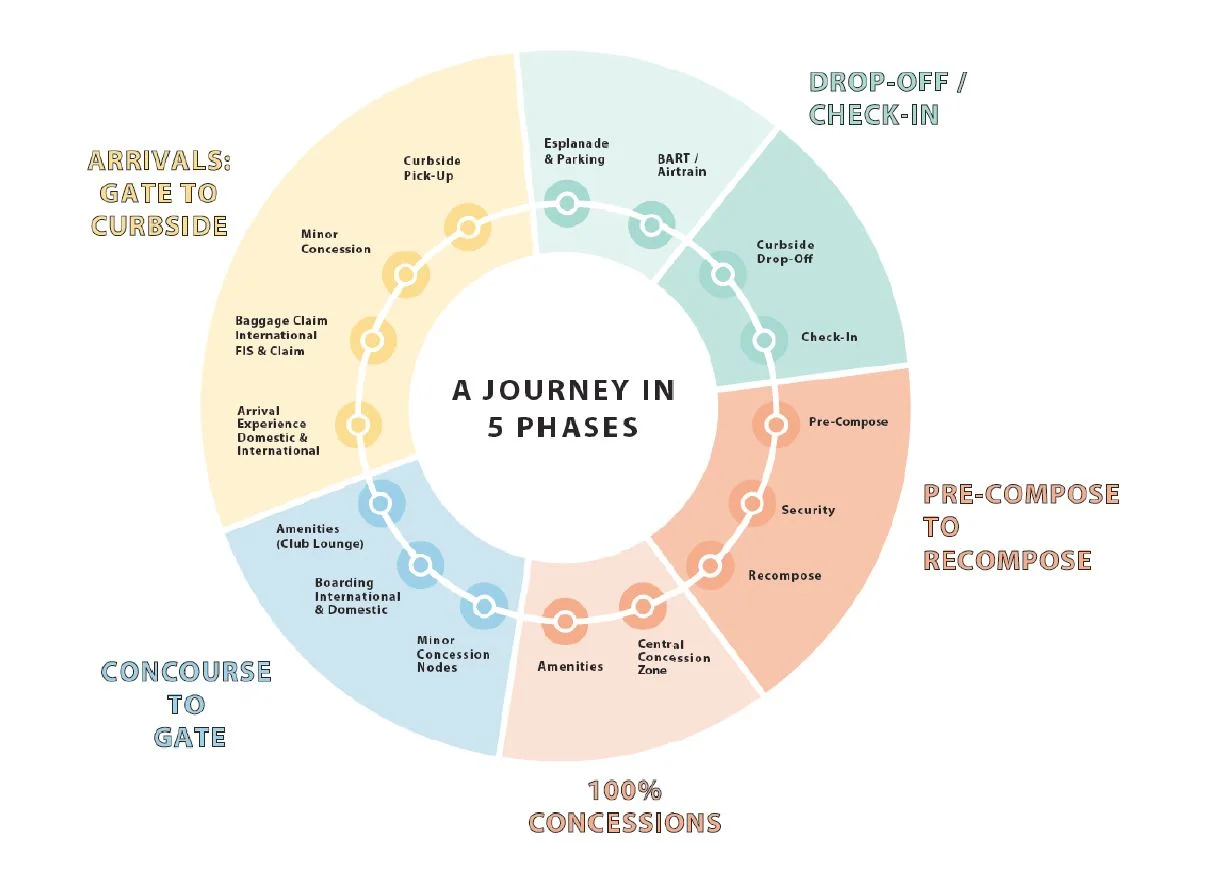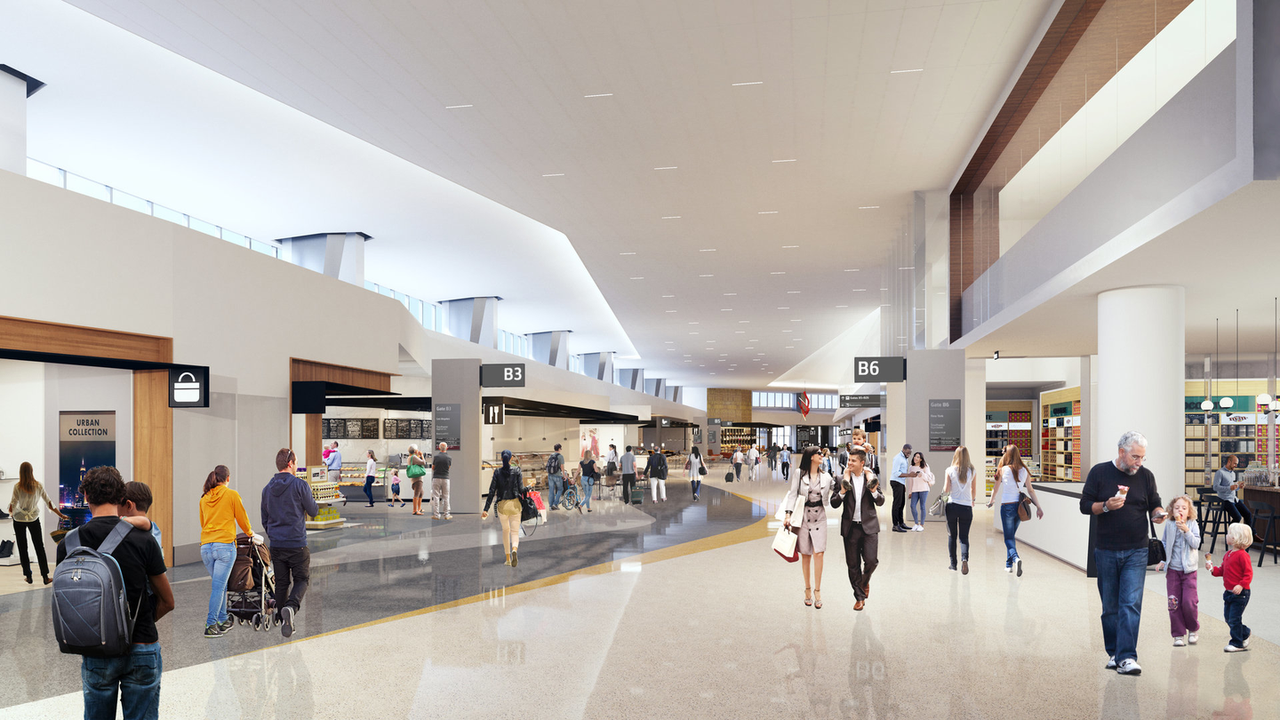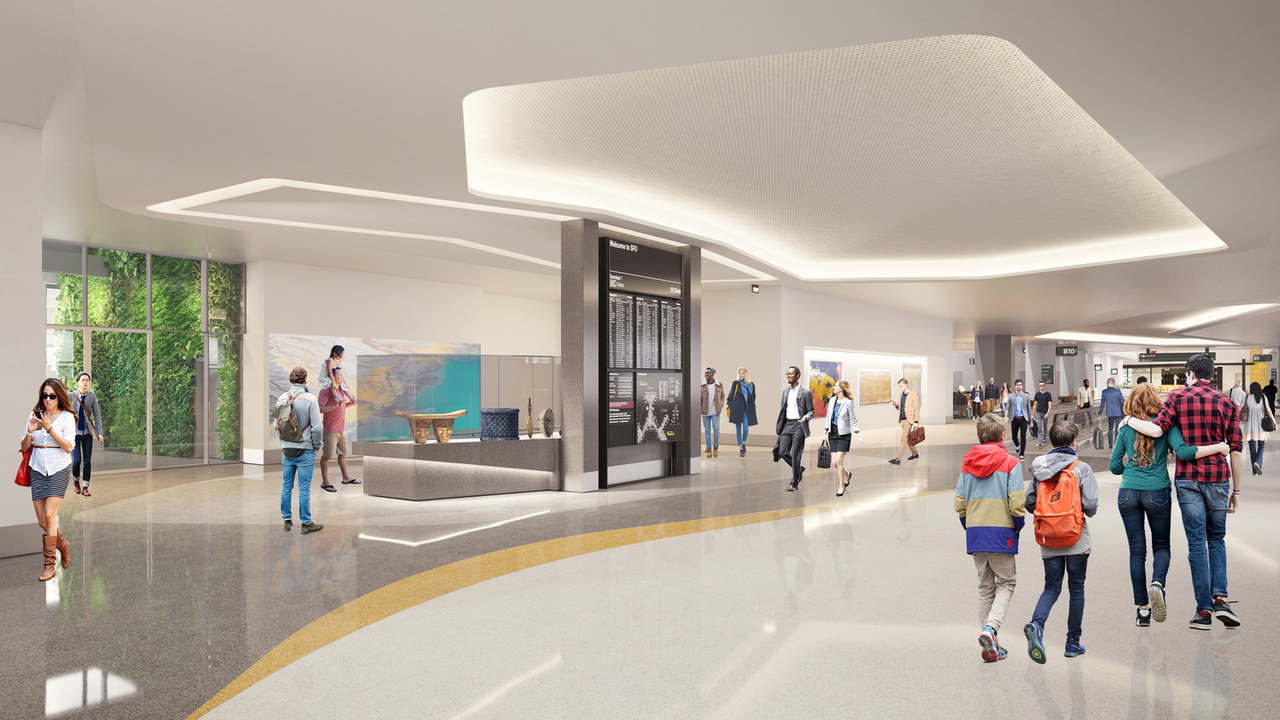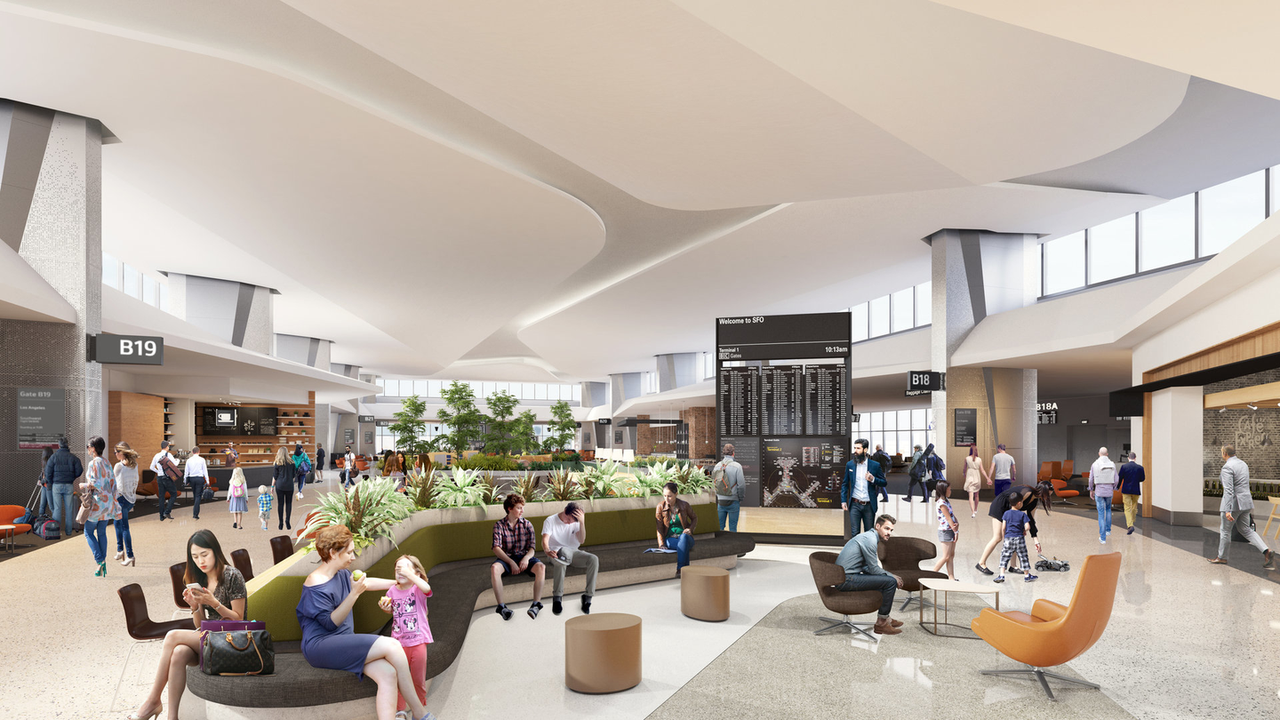Stephanie Tabb
ARCH + TECH
ORGANIZATIONAL CONCEPT
The concept of Bay Area Naturalism aims to celebrate the variegated character of the Bay Area. Boarding Area B is organized and grouped into four “scenes” which are expressed through the following primary experiences: Main and Main, Marketplace, Mid-Pier pop-up and the Park, each of these scenes with distinctive design characteristics.
JOURNEY MOMENTS
Main + Main
Marketplace
Mid-Pier
End of Pier
PASSENGER EXPERIENCE
For Terminal 1 of the San Francisco International Airport, the design team developed 5 passenger types and corresponding journeys to input into a crowd simulation software. This highly detailed computational model enabled the design team to make informed decisions and optimize circulation within the boarding area.
In thinking about the passenger journey, it is important to consider that there are three main types of airport experiences: Departing, Connecting and Arriving. Depending on a passengers stage in their journey, they may experience SFO in any one, or all three of these stages. Interviews were conducted at SFO regarding the passenger experience. Using this data, five major passenger types were identified as follows: Leisure, Business, Family, Assisted and Unique Passengers.
PERSONAS
USER FLOWS
COMPUTATIONAL SIMULATIONS
MassMotion Flow is an advanced pedestrian simulation and crowd analysis tool. Able to simulate hundreds of thousands of people with realistic behaviors, MassMotion allowed us to understand and predict user behavior through computational design and analysis.
I led the initial development of these data-driven simulations. As the design team's reliance upon these studies grew, 2 additional computational researchers were brought on. The 3 of us worked between the Superspace Design research group and the project design team to develop these models in real-time.
Boarding Area B - Agent Count Simulations
Boarding Area B - Agent Count Simulations
End of Pier Gate House Study - Queuing Simulations
peak design day, 20 minute interval / time - 9:40AM / total passengers 1006
End of Pier Gate House Study - Queuing Simulations
peak design day, 20 minute interval / time - 1:40PM / total passengers 553
























